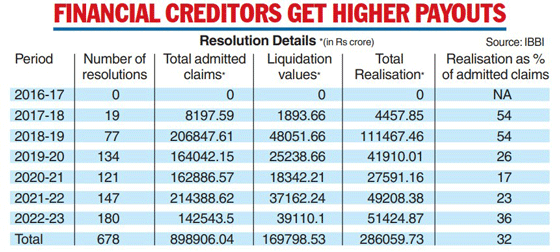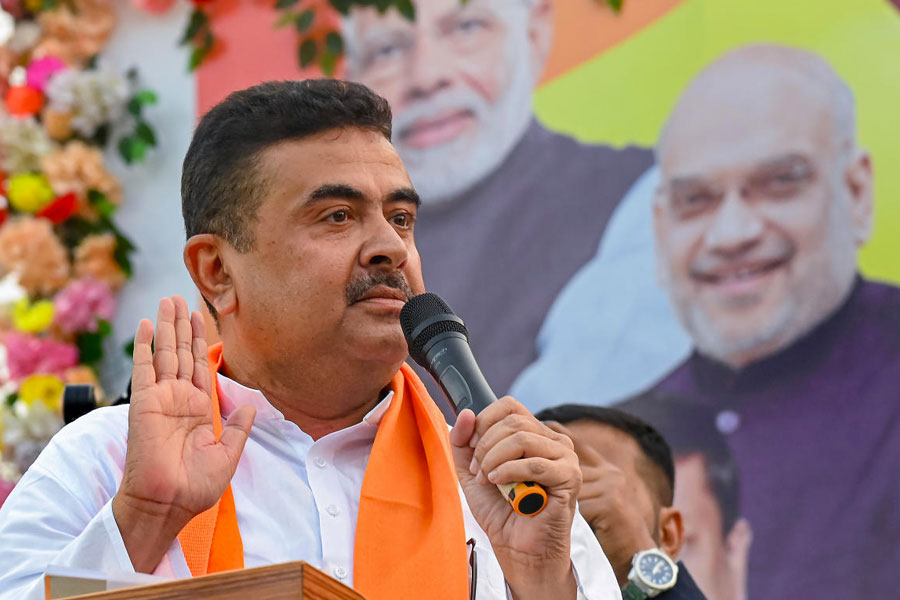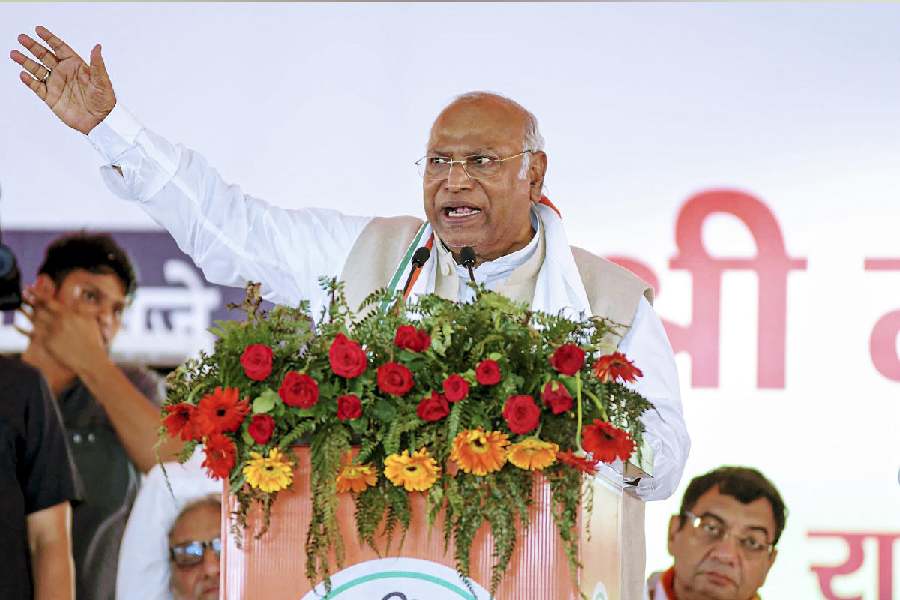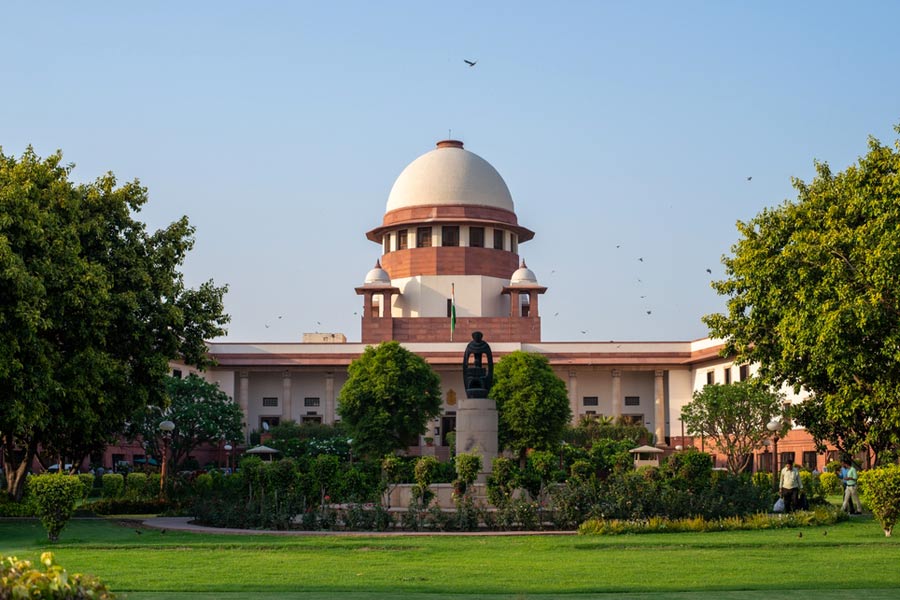Insolvency cases have started to rise in India once again after a two-year hiatus when the filing of fresh cases dipped because of the pandemic and a series of measures taken by the authorities including a loan moratorium to help companies endure the crisis.
But there is a difference this time round: the rash of new IBC cases comes at a time when creditors are showing a greater willingness to explore other ways to resolve the financial crises that companies are facing outside the rigid confines of the Insolvency & Bankruptcy Code, 2016.
Data available with Insolvency & Bankruptcy Board of India (IBBI) shows a 41 per cent rise in the number of cases admitted for corporate insolvency resolution process (CIRP) in 2022-23 over the previous year. Stacked against the year before (FY21), when the pandemic was raging, the jump amounts to 133 per cent. (See chart)
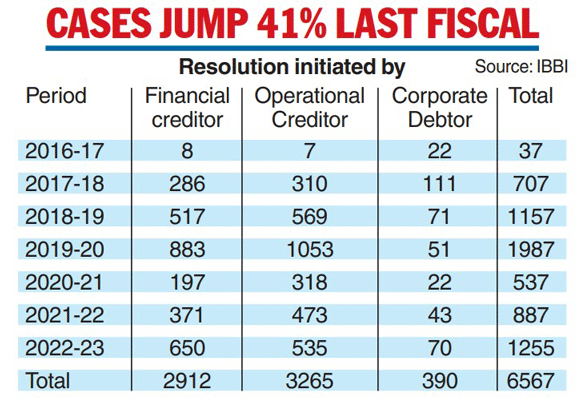
Lawyers, resolution professionals and bankers attributed the spike to the clearance of a backlog. There were many cases pending before the NCLT which were finally admitted in FY23, they said.
“In 2020-21, section 10A was introduced suspending fresh cases to IBC. Courts werealso not scrambling to send companies into insolvency, giving them some time to put their house in order asthere was general stress in the economy. But now that overall economic scenario has normalised and growth indicators are back on track, the courts are being less considerateto arguments against admission to insolvency,” said Kumar Saurabh Singh, partner at Khaitan & Co.
Even as the number of IBC cases has spiralled higher, financial creditors have also realised more from the resolution of cases in FY23. They realised 36 per cent of the admitted claims in the last fiscal, compared with 23 per cent and 17 per cent in FY22 and FY21 respectively. The realisation was even higher than the combined realisation of 32 per cent since the inception of IBC.
Till March 31, creditors have recovered Rs 2.86 lakh crore against a fair value of Rs 2.65 lakh crore, a liquidation value of Rs 1.7 lakh crore and admitted claims of Rs 8.99 lakh crore.
The sector profile has also undergone some changes. While manufacturing firms and steel companies were under stress and admitted to NCLT, they are now in the pink of health. At the same time, more and more consumer-facing entities and real estate firms are being wheeled into the insolvency process. A number of smaller companies, representing the MSME sector, are also being sucked into insolvency.
Changing track
While the numbers reflect an uptick, people associated with the sector caution that the pipeline of fresh cases could dry up going forward. Most observers say the inordinate delay in the resolution process and the spate of litigation are the main reasons that have sapped creditors’ enthusiasm for the IBC process.
“There is a great deal of trepidation among bankers. They are not happy with the outcome of recent resolutions and the time taken for the same,” said Sumit Khanna, partner and head corporate finance and restructuring services at Deloitte India.
He argued that banks are slowly moving away from filing insolvency pleas against corporate debtors and exploring other ways to address debt woes outside insolvency.
“Lenders have understood that insolvency may not give them the best outcome in all situations. IBC is not their first preference as you may have seen earlier between 2017 and 2020,” Singh added.
As on December 31, 2022, 64 per cent of the ongoing cases missed the 270-day deadline for resolution stipulated under the IBC process.
Bankers say the option of a one-time settlement (OTS) is being preferred in many cases. “We speak to the existing promoters and look for ways to recover from the account outside the ambit of IBC and OTS,” said a senior executive of a public sector bank.
For instance, the scheduled commercial banks of McLeod Russel India Ltd are pursuing OTS of outstanding debt under Reserve Bank of India’s Prudential Framework for Resolution of Stressed Assets dated June 7, 2019, instead of taking the bulk tea producer to CIRP.
In Religare Finvest, banks opted for OTS and closed the case; in two other NBFCs — Srei Infrastructure and Reliance Capital — insolvency resolutions are still going on.
Apart from OTS, banks are also looking at sale of loans as an option. In the case of power generator KSK Mahanadi, many banks sold their debt to asset reconstruction companies as there was a high demand for the good quality asset.
Anoop Rawat, partner at Shardul Amarchand Mangaldas & Co, said banks are also attempting to change the management in a non-adversarial way, where the proposal for introducing new investors to restructure the business are considered provided the forensic audits do not bring out wrongdoing in the accounts.
However, some banks do not take the trouble to find an alternative solution. Two factors are prompting banks and other financial creditors to push for IBC: first, with a set legal framework, the blowback will be almost nil on the officials in case of any future investigation and, second, in case of consortium lending, the preference remains towards a more transparent IBC mechanism for recovery even if it takes more time, said an executive of a PSU bank.
Settling down
While bankers and experts are in agreement that India has made great strides in insolvency and averted a banking crisis — financial creditors recovered Rs 1.11 lake crore, or 54 per cent, of admitted claims in FY19 when large steel assets were sold off— there is still room for improvement.
Some are hoping that new amendments will be introduced in the IBC resolution process in the ongoing session of Parliament. “When we talk to our colleagues in more mature markets such as the UK, they say it took them about 10-12 years for a settled legal framework to emerge,” Khanna said.
Creditors face legal challenges not only during admission or during resolution process, but after resolution as well. For instance, a successful resolution applicant was found in Aircel three years back but the process is still not over.
“The delay causes multiple damages, including diminution in the quality of assets. Over the period, buyers’ interest goes down,” said a legal expert.
The stick
Bankers, lawyers and companies agree that the biggest success of IBC is a change in the credit culture. “The objective of the law was to use it as a threat and stop short of actually carrying it out. Banks have over time realised that the IBC is a powerful stick but to use it everywhere without making any attempt to resolve the problem outside insolvency process may not yield the best outcome,” Singh argued.
Khanna maintained that the other methods cannot replicate the outcomes that insolvency achieves.
But now that the economy has emerged from the pandemic blues, will the number of cases start going down? Or will banks have to wrestle with a sharp surge in NPAs once the two-year grace period under the RBI’s extended resolution framework draws to an end later this year?
Bankers claim there is no need to harbour such apprehensions.
RBI’s resolution framework 2.0, which was announced in May 2021, had a cutoff date of September 30, 2021. Under the scheme a moratorium period of two years was offered to retail borrowers and small businesses, which will end this year, for eligible borrowers.
“It is difficult to predict if there will be an increase in stress as a result of this. In general, the Covid restructuring book has behaved well. And in any case, most banks have adequately provided for these exposures. At this point of time, the expectation is that stress levels will not increase. This was also reflected in the RBI’s estimates that gross NPAs will improve. Banks are also adequately capitalised and looking at various capital-raising options in FY24,” a banker explained.
Irrespective of the short-term outlook, many believe that India will follow the trajectory in major economies which have witnessed a surge in corporate insolvency cases. A leading consultancy firm, which has hired a large number of professionals with expertise in insolvency cases, had started to worry about what they would do if IBC cases started to dry up. That is when they reached out to their colleagues in advanced countries to seek advice.
The advice that the consultancy received was reassuring.
“Don’t worry. Corporates always find ingenious ways to drag themselves into insolvency,” the foreign partner told them with a chuckle.
